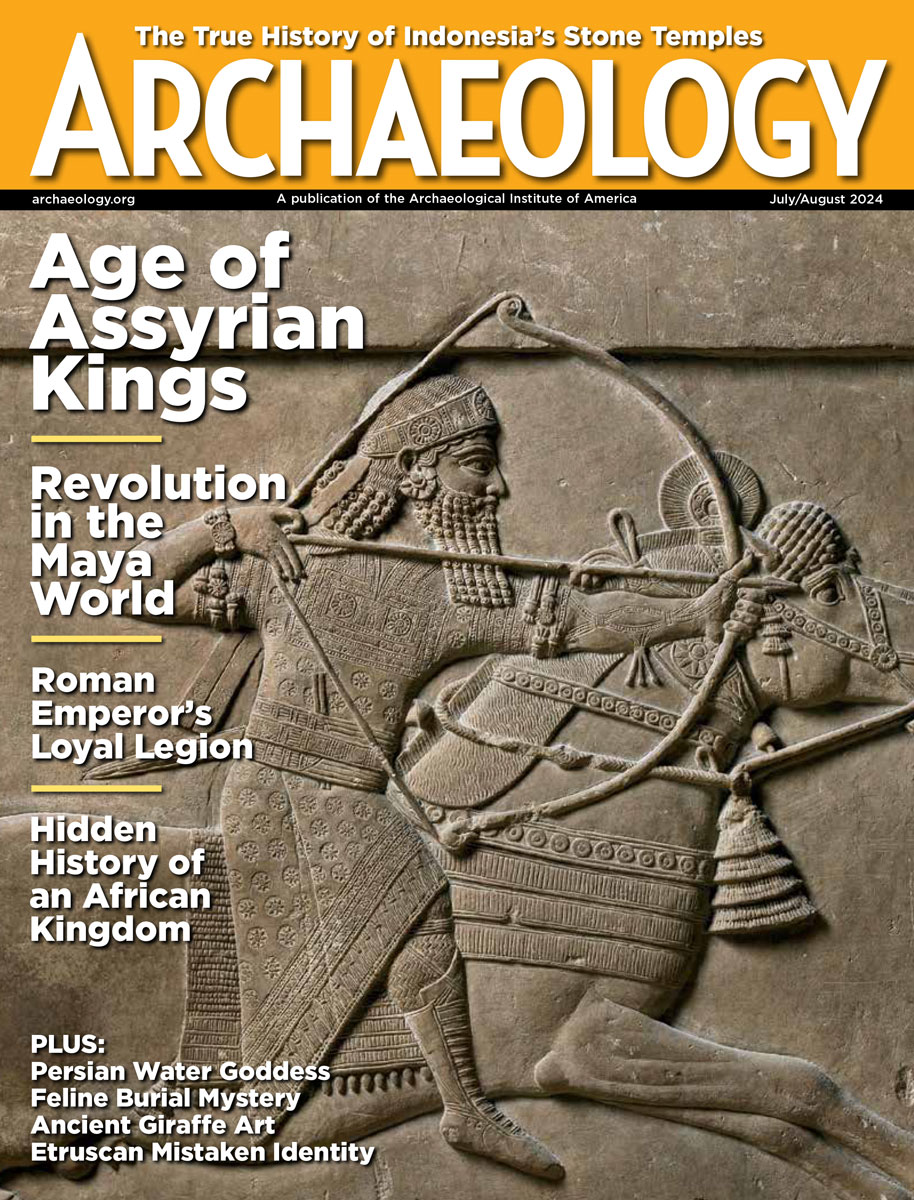Tuesday, November 18
November 18, 2008
Researchers from the University of Chicago discovered an Iron Age funerary stele at the ancient city of Sam’al, in southeastern Turkey. The stele is carved with an image of the deceased, who is thought to have been cremated, and an inscription proclaiming that his soul inhabited the stone.  The New York Times also has an article on the stele.
A village that once housed between 600 and 700 Iroquoians between 1300 and 1400 A.D. was excavated in Ontario. Five longhouses, arrowheads, burned corn, pipes, pottery, and bone tools were unearthed, in addition to human remains. Â
A German artist using international funding is planning to re-create the Colossus of Rhodes on a pier in the harbor of the Greek island. Â
Libya’s government announced that it will coordinate the work of foreign and local archaeologists. “We will open our arms to the best scientists from Japan to the United States,” said Giuma Anag, chair of the government’s archaeology department. Â
A traveler left his mark on a block of red sandstone in Saudi Arabia 1,300 years ago, writing in Arabic with a system of diacritical marks. Scholars are using this new clue to try to determine whether or not the Qur’an, which now lacks diacritical marks, ever had them. Â
Customs officials at Bulgaria’s Sofia Airport seized…something. It doesn’t look like a sculpture of Augustus as this story claims, or even genuine, for that matter.
- Comments Off on Tuesday, November 18
Monday, November 17
November 17, 2008
What’s being called the world’s oldest family has been uncovered in a Stone Age cemetery in Germany. DNA testing has revealed that the 4,600-year-old skeletons of a man, woman, and two children, who had died violent deaths and were buried together, were a family. Others buried in the cemetery had also died violent deaths, leading scientists to conclude that the victims died in a sudden, fierce raid.
Scholars now say the Tudor warship Mary Rose was sunk by a French cannonball during the Battle of the Solent, and not by poor seamanship. “It would have been embarrassing enough for Henry VIII that the ship sunk in front of him, but it is not unreasonable that if he discovered what had happened he would not have wanted to have it credited to the French,” said Dominic Fontana, who led the research into the tides, winds, and ship positions on the day of the battle. Â
A copy of the Bixby Letter, thought to have been written by Abraham Lincoln to a grieving mother during the Civil War, has turned up at the Dallas Historical Society archives. “The letter was so popular that it was published in newspapers and people copied it and sent it to relatives,” said curator Alan Olson. Experts have been asked to determine if the document is an original government copy. Â
Conservators at the Canadian Museum of Civilization are repairing an ancient Egyptian coffin smashed during a student protest in 1969 at the École des Beaux-Arts de Montreal. Â
Bones and tools made from stones imported from South Dakota and perhaps Montana were unearthed in 1988 at a 7,000-year-old bison kill site in Minnesota. Archaeologists from the State Historic Preservation Office want to return and dig some more, and analyze the artifacts recovered 20 years ago. Â
In Spain, a pair of 2,300-year-old earrings was discovered at the necropolis at Coimbra del Barranco Ancho. They are said to bear a grape design.
- Comments Off on Monday, November 17









